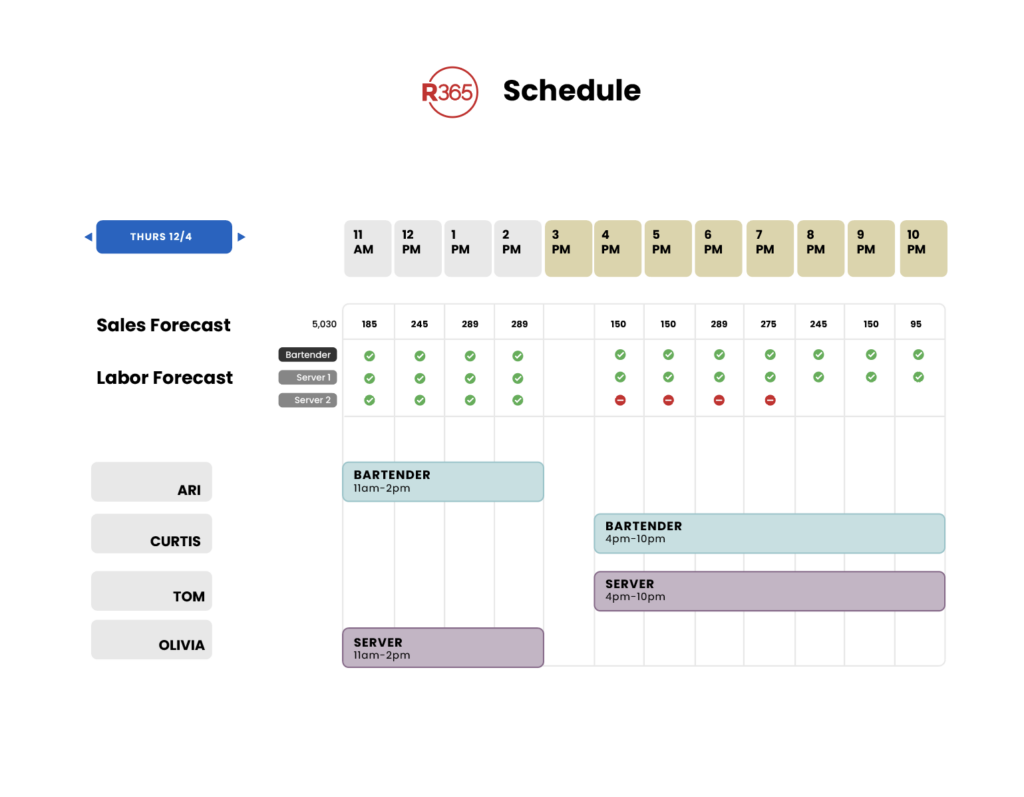By visiting our site, you agree to our privacy policy regarding cookies, tracking statistics, etc.
Predictive scheduling is can have wide ranging benefits for restaurant managers and restaurant staff alike. Read along to learn how to put predictive scheduling to work for your restaurant business.
Predictive scheduling is a workforce management strategy that uses data analytics and algorithms to forecast labor demand and create employee schedules in advance. This method aims to align staffing levels with anticipated business needs, reduce costs, enhance operational efficiency, and improve employee satisfaction by providing stable and predictable work hours.
Predictive scheduling has become an invaluable tool in the modern workplace, transforming how businesses manage operations, optimize resources, and cater to both employees and customers. Here are some key uses of predictive scheduling:
Predictive scheduling offers numerous benefits that enhance both operational efficiency and employee satisfaction. By using data and algorithms to forecast demand and plan schedules, businesses can better manage their workforce, streamline operations, and create a more positive work environment.
Here are some of the key advantages of predictive scheduling:

Here’s a look at which states have predictive scheduling laws.
See why more than 40,000 restaurants use Restaurant365
Read More:
Predictive scheduling is transforming restaurant businesses by combining efficiency with employee satisfaction. By using data, it optimizes restaurant staffing, ensures compliance, and promotes work-life balance. While challenges like data accuracy and compliance exist, they can be addressed with advanced technology and employee engagement. This approach enables restaurants to streamline operations and support a dynamic front of house and back of house workforce.
Share this blog:
Restaurant365 bridges the gap between accounting and operations by centralizing all data, helping restaurant operators to become more efficient, accurately forecast, and tackle any challenge or opportunity with speed and accuracy.